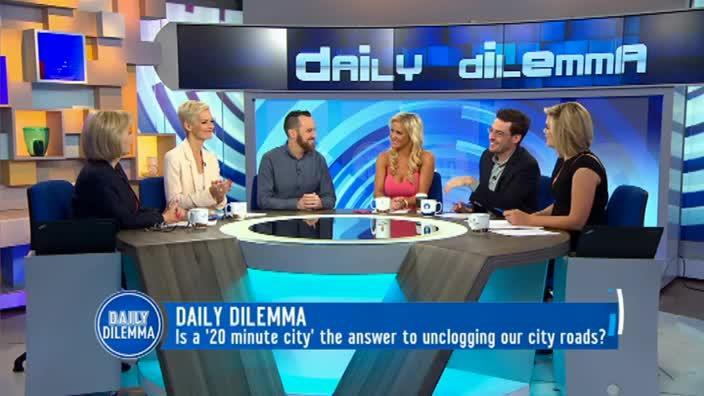Bus industry calls on state, federal governments to heed complaints from city dwellers and fix congestion
IT IS the ambitious concept that would turn Australian cities from clogged traffic nightmares into streamlined utopias. It is time for the 20-minute city.

Economy
Don't miss out on the headlines from Economy. Followed categories will be added to My News.
IT’S the Holy Grail of urban planning — the 20-minute city where no important destination takes longer than that to reach from your home.
And Australia’s bus industry believes it can be achieved with greater state and federal government investment in public transport and planning to unclog city roads.
The objective is to put employment, shops, schools and healthcare within 20 minutes of a person’s home by foot, cycling or public transport.
Private car use would be discouraged and the connections would be available within all neighbourhoods of a major centre.
The Bus Industry Confederation (BIC) is challenging MPs from all parties to respond to the complaints from the 15 million Australians who have to live with traffic congestion and long commutes, which eat into family and leisure time.
“How can members of federal Parliament, whose electorates are inner-city, middle suburbs or outer-metro, not believe that their punters want a better place to live?” BIC executive director Michael Apps told news.com.au.
“It is time the federal government did more than produce reports and (instead) put in place the governance structures, funding and programs that will deliver the 20-minute city. It has to start at the top with the PM and the premiers.”
In addition to the lifestyle improvements, there would be a national benefit from making our biggest cities, which are major economic generators, more efficient.
“The federal government’s role has to be critical — it is all about the economy,” Mr Apps said.
The 20-minute city concept was developed in Canada and three years ago and an attempt was made to implement it in Melbourne.

A report commissioned by the BIC said the aim was to give residents “the ability to be mobile and to access friends, employment and activities” and “most needs”.
“A 20-minute city therefore requires both a range of local activities and also requires local mobility choices, particularly safe walking/cycling opportunities and an adequate service level on local public transport. These can be best provided where urban densities are planned for this purpose,” the report states.
There would be some trade-offs for this ready access. The population density of some areas would have to be increased sharply to make changes viable. One example could be 200,000 people living within a 5km radius.
The objective would be to guarantee public transport services — bus or tram for example — every 20 to 30 minutes for at least 18 hours of a day.
Small buses might be introduced to help maintain the frequency and cut costs.
The BIC report notes smaller vehicles mean savings from fuel use, maintenance and wages.
“The major problem with smaller buses is that if passenger loads at any time exceed the capacity of a smaller bus, then another bus (or other vehicle) is needed. If this necessitates acquisition of another vehicle, costs will clearly increase,” the report states.
It calls for the states and the Commonwealth to act on their existing agreement on capital city planning and for greater infrastructure investment.
Originally published as Bus industry calls on state, federal governments to heed complaints from city dwellers and fix congestion



